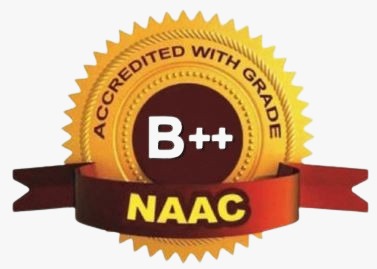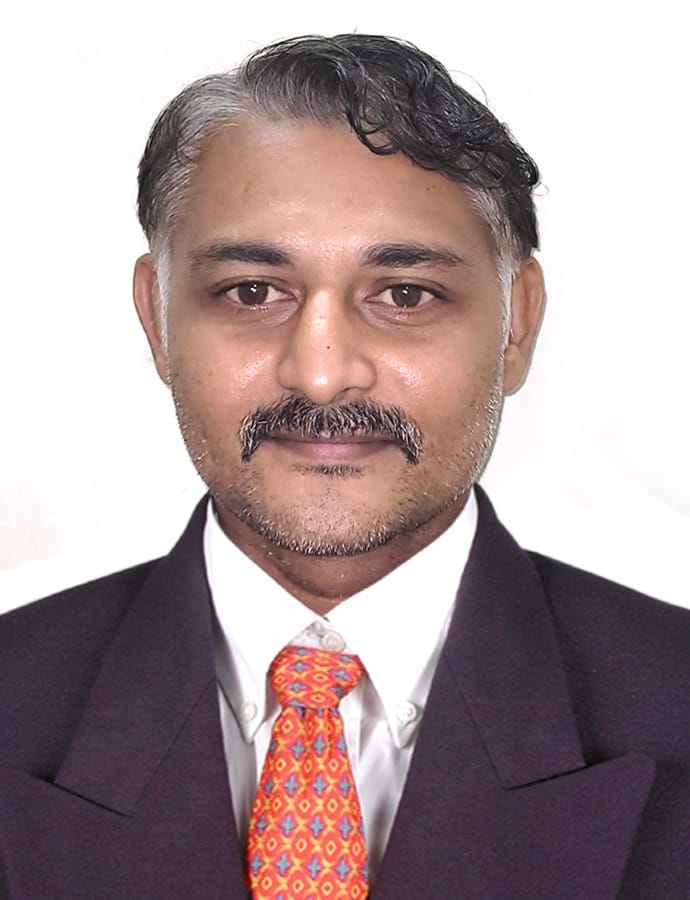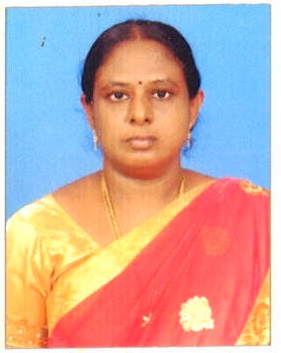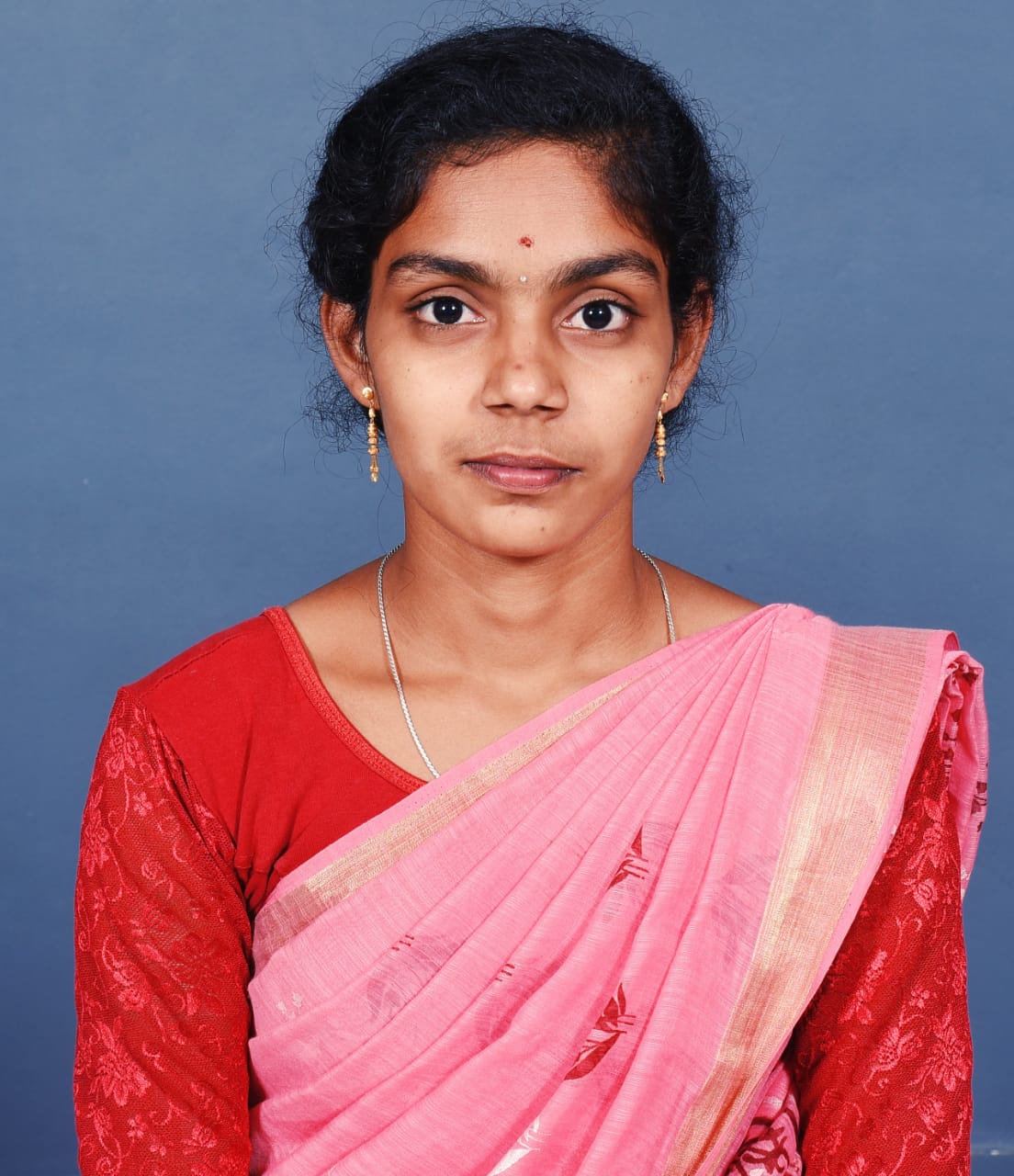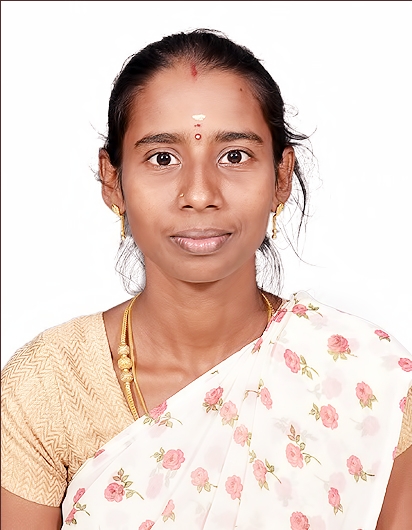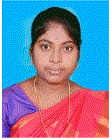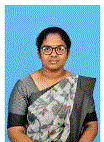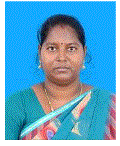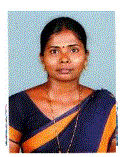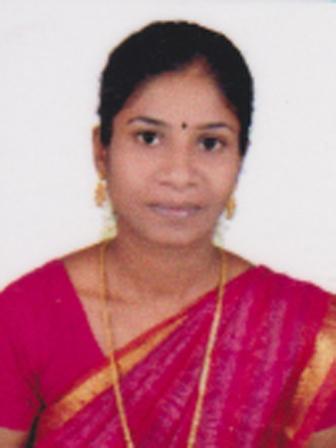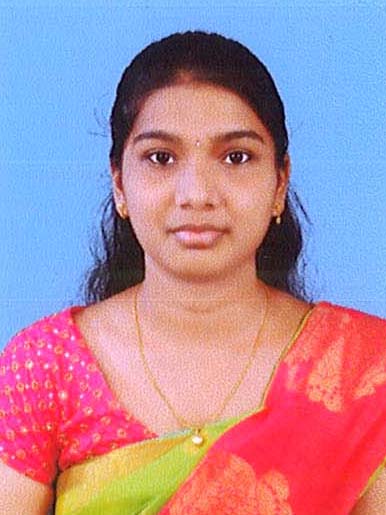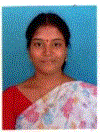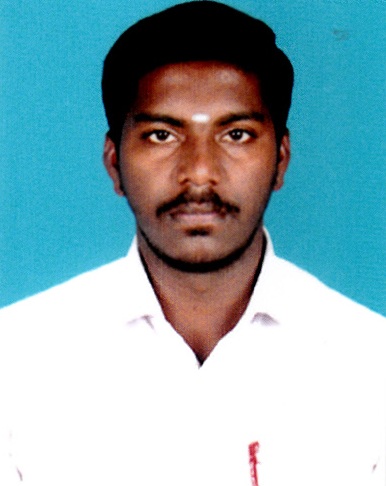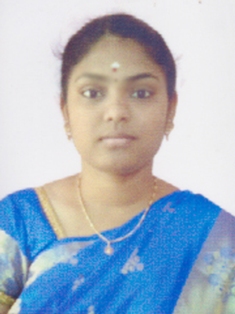Computer Science AND Engineering
Course Description
The Department of Computer Science and Engineering was launched in 2010 with the Undergraduate Program BE in Computer Science and Engineering. The Postgraduate Program ME in Computer Science and Engineering was started in 2013. The strength for this academic year is 175 for the UG program and 15 for the PG program. Both UG and PG programs are conducted based on the curriculum assigned by Anna University, Chennai. It provides an excellent ambiance for students to learn and acquire the necessary skills required by the IT Industry.
The backbone of the administration is abundantly contributed by an aggregation of dedicated and accomplished adroitness associates who are specialized in assorted fields. The research areas of the branch are promoted with a proper variety of Ph.D. degree holders, and lots of them are pursuing their Doctoral programs. The studies promoted by the department are evidenced by the number of papers published in refereed Journals. Besides the regular classroom lectures, the students are given laboratory exercises to acquire practical skills and computing capability.
Periodically, guest lectures and seminars are organized for the improvement of faculty and students. A free round-the-clock internet facility is available for staff and students. Right from its inception in the year 2010, the Department has steadily grown in all spheres in terms of:
Student strength, physical Infrastructure, and number of labs subject-wise, as per the rapid up gradations introduced by AICTE in recent times and progressive changes in the syllabus of Anna University, Chennai.
Central and Department libraries, number of systems in labs, requisite software, organization and establishment of an in-house maintenance wing, and its training
Brilliant faculty is strengthened through qualification improvement programs, human resources in the form of trained supporting staff, all round quality development programs and operating systems for improving upon the functional effectiveness of the department. The Department has well-qualified faculty members with various specializations relevant to the industry.
A wide range of activities undertaken in the department allow the students to gain contemporary knowledge of the basic problems in the IT industry.
The students are motivated to participate in seminars, workshops and conferences organised by Anna University, IITs and other technical institutions. They are also encouraged to organise the seminars and workshops on current trends of Computer Science and Engineering, inviting participants from other institutions and experts from Institutions of Excellence such as Anna University, IITs, NIT and other IT industry sectors. Guest Lectures are arranged for the benefit of the students, inviting eminent Professors, Industrial Experts, Scientists, Technocrats in IT fields. Students are encouraged to undertake socially relevant projects and such projects provide an opportunity for the students to serve society.
The Department has signed an MOU with Eduskills Foundation facilitating the students to carry out research projects, enhancing the placement potential through interplant training and internships for acquiring experience in industrial the environment. Hence, the department has brought out exceptional engineers in the past and will continue to do so in the years to come. The Department maintains excellent interaction with the IT industry and organizes regular guest lectures by experts, industrial visits, internships etc. and stands for industry – Institute collaboration. Continuous efforts and hard work of the faculty members resulted in placing our students in reputed MNC companies like IBM, TCS, WIPRO, INFOSYS, CTS, HCL, VDART etc.,
Vision:
To be a Center of Excellence in the field of Computer Science and Engineering believes in providing quality education to students through continuous learning and research activities to produce globally competitive, self-disciplined and ethical Computer Engineers to meet the social needs.
Mission:
1. To prosper students with moral values, discipline, high integrity, technical skills and strong theoretical foundation to solve the real time problems through innovative teaching for serving industry and Nation's socio-economic progress.
2. To promote research and development in the field of Computer Science and Engineering through interdisciplinary approach.
3. To provide personality development for pursuing careers in industry, academic and research.
PEO (PROGRAM EDUCATIONAL OBJECTIVE)
Graduates can
1. Apply their technical competence in computer science to solve real world problems, with technical and people leadership.
2. Conduct cutting edge research and develop solutions on problems of social relevance.
3. Work in a business environment, exhibiting team skills, work ethics, adaptability and lifelong learning
PSO (PROGRAM SPECIFIC OUTCOME)
Graduates should be able to
1. Exhibit design and programming skills to build and automate business solutions using cutting edge technologies. Strong theoretical foundation leading to excellence and excitement towards research, to provide elegant solutions to complex problems.
2. At the time of graduation will be able to work effectively with various engineering fields as a team to design, build and develop cost effective hardware/software systems and components for engineering/social applications
Course Outcomes
| UG Regulation -2021 | |||||||
|---|---|---|---|---|---|---|---|
| YEAR / SEMESTER : II/III | |||||||
| C301-MA3354/DISCRETE MATHEMATICS | |||||||
| C301.1 | Have knowledge of the concepts needed to test the logic of a program. | ||||||
| C301.2 | Have an understanding in identifying structures on many levels. | ||||||
| C301.3 | Be aware of a class of functions which transform a finite set into another finite set which relates to input and output functions in computer science. | ||||||
| C301.4 | Be aware of the counting principles. | ||||||
| C301.5 | Be exposed to concepts and properties of algebraic structures such as groups, rings and fields. | ||||||
| C302-CS3351/DIGITAL PRINCIPLES AND SYSTEM DESIGN | |||||||
| C302.1 | Design various combinational digital circuits using logic gates | ||||||
| C302.2 | Design sequential circuits and analyze the design procedures | ||||||
| C302.3 | State the fundamentals of computer systems and analyze the execution of an instruction | ||||||
| C302.4 | Analyze different types of control design and identify hazards | ||||||
| C302.5 | Identify the characteristics of various memory systems and I/O communication | ||||||
| C303-CS3352/FOUNDATION OF DATA SCIENCE | |||||||
| C303.1 | Define the data science process | ||||||
| C303.2 | Understand different types of data description for data science process | ||||||
| C303.3 | Gain knowledge on relationships between data | ||||||
| C303.4 | Use the Python Libraries for Data Wrangling | ||||||
| C303.5 | Apply visualization Libraries in Python to interpret and explore data | ||||||
| C304-CS3301/DATA STRUCTURES | |||||||
| C304.1 | Define linear and non-linear data structures. | ||||||
| C304.2 | Implement linear and non–linear data structure operations. | ||||||
| C304.3 | Use appropriate linear/non–linear data structure operations for solving a given problem. | ||||||
| C304.4 | Apply appropriate graph algorithms for graph applications. | ||||||
| C304.5 | Analyze the various searching and sorting algorithms. | ||||||
| C305-CS3391/ OBJECT ORIENTED PROGRAMMING | |||||||
| C305.1 | Apply the concepts of classes and objects to solve simple problems | ||||||
| C305.2 | CO2:Develop programs using inheritance, packages and interfaces | ||||||
| C305.3 | CO3:Make use of exception handling mechanisms and multithreaded model to solve real world problems | ||||||
| C305.4 | CO4:Build Java applications with I/O packages, string classes, Collections and generics concepts | ||||||
| C305.5 | CO5:Integrate the concepts of event handling and JavaFX components and controls for developing GUI based applications | ||||||
| C306-CS3311/DATA STRUCTURES LABORATORY | |||||||
| C306.1 | Implement Linear data structure algorithms. | ||||||
| C306.2 | Implement applications using Stacks and Linked lists | ||||||
| C306.3 | Implement Binary Search tree and AVL tree operatios. | ||||||
| C306.4 | Implement graph algorithms. | ||||||
| C306.5 | Analyze the various searching and sorting algorithms. | ||||||
| C307- CS3381/ OBJECT ORIENTED PROGRAMMING LABORATORY | |||||||
| C307.1 | Design and develop java programs using object oriented programming concept | ||||||
| C307.2 | Develop simple applications using object oriented concepts such as package, exceptions | ||||||
| C703.3 | Implement multithreading, and generics concepts | ||||||
| C703.4 | Create GUIs and event driven programming applications for real world problems | ||||||
| C703.5 | Implement and deploy web applications using Java | ||||||
| C308-CS3361/DATA SCIENCE LABORATORY | |||||||
| C308.1 | Make use of the python libraries for data science | ||||||
| C308.2 | CO2: Make use of the basic Statistical and Probability measures for data science. | ||||||
| C308.3 | CO3: Perform descriptive analytics on the benchmark data sets. | ||||||
| C308.4 | CO4: Perform correlation and regression analytics on standard data sets | ||||||
| C308.5 | CO5: Present and interpret data using visualization packages in Python. | ||||||
| C309-GE3361/PROFESSIONAL DEVELOPMENT | |||||||
| C309.1 | Use MS Word to create quality documents, by structuring and organizing content for their day to day technical and academic requirements | ||||||
| C309.2 | Use MS EXCEL to perform data operations and analytics, record, retrieve data as per requirements and visualize data for ease of understanding | ||||||
| C309.3 | Use MS PowerPoint to create high quality academic presentations by including common tables, charts, graphs, interlinking other elements, and using media objects. | ||||||
| YEAR / SEMESTER : II/IV | |||||||
| C401- CS3452/THEORY OF COMPUTATION | |||||||
| C404.1 | Construct automata theory using Finite Automata | ||||||
| C404.2 | Write regular expressions for any pattern | ||||||
| C404.3 | Design context free grammar and Pushdown Automata | ||||||
| C404.4 | Design Turing machine for computational functions | ||||||
| C404.5 | Differentiate between decidable and undecidable problems | ||||||
| C402- CS3491/ARTIFICIAL INTELLIGENCE AND MACHINE LEARNING | |||||||
| C402.1 | Use appropriate search algorithms for problem solving | ||||||
| C402.2 | Apply reasoning under uncertainty | ||||||
| C402.3 | Build supervised learning models | ||||||
| C402.4 | Build ensembling and unsupervised models | ||||||
| C402.5 | Build deep learning neural network models | ||||||
| C403- CS3492/DATABASE MANAGEMENT SYSTEMS | |||||||
| C403.1 | Construct SQL Queries using relational algebra | ||||||
| C403.2 | To identify the causes, effects of environmental pollution and natural disasters and contribute to the preventive measures in the society. | ||||||
| C403.3 | Construct queries to handle transaction processing and maintain consistency of the database | ||||||
| C403.4 | Compare and contrast various indexing strategies and apply the knowledge to tune the performance of the database | ||||||
| C403.5 | Appraise how advanced databases differ from Relational Databases and find a suitable database for the given requirement. | ||||||
| C404- CS3401/ALGORITHMS | |||||||
| C401.1 | Analyze the efficiency of algorithms using various frameworks | ||||||
| C401.2 | Apply graph algorithms to solve problems and analyze their efficiency. | ||||||
| C401.3 | Make use of algorithm design techniques like divide and conquer, dynamic programming and greedy techniques to solve problems. | ||||||
| C401.4 | Use the state space tree method for solving problems. | ||||||
| C401.5 | Solve problems using approximation algorithms and randomized algorithms | ||||||
| C405- CS3451/INTRODUCTION TO OPERATING SYSTEMS | |||||||
| C405.1 | Analyze various scheduling algorithms and process synchronization. | ||||||
| C405.2 | Explain deadlock prevention and avoidance algorithms. | ||||||
| C405.3 | Compare and contrast various memory management schemes. | ||||||
| C405.4 | Explain the functionality of file systems, I/O systems, and Virtualization | ||||||
| C405.5 | Compare iOS and Android Operating Systems. | ||||||
| C406- GE3451/ENVIRONMENTAL SCIENCE AND SUSTAINABILITYS | |||||||
| C406.1 | To recognize and understand the functions of environment, ecosystems and biodiversity and their conservation. | ||||||
| C406.2 | To identify the causes, effects of environmental pollution and natural disasters and contribute to the preventive measures in the society. | ||||||
| C406.3 | To identify and apply the understanding of renewable and non-renewable resources and contribute to the sustainable measures to preserve them for future generations. | ||||||
| C406.4 | To recognize the different goals of sustainable development and apply them for suitable technological advancement and societal development. | ||||||
| C406.5 | To demonstrate the knowledge of sustainability practices and identify green materials, energy cycles and the role of sustainable urbanization. | ||||||
| C407-CS3461/OPERATING SYSTEMS LABORATORY | |||||||
| C407.1 | Define and implement UNIX Commands | ||||||
| C407.2 | Compare the performance of various CPU Scheduling Algorithms. | ||||||
| C407.3 | Compare and contrast various Memory Allocation Methods. | ||||||
| C407.4 | Define File Organization and File Allocation Strategies. | ||||||
| C407.5 | CO5 : Implement various Disk Scheduling Algorithms. | ||||||
| C408-CS3481/DATABASE MANAGEMENT SYSTEMS LABORATORY | |||||||
| C408.1 | Create databases with different types of key constraints. | ||||||
| C408.2 | Construct simple and complex SQL queries using DML and DCL commands. | ||||||
| C408.3 | Use advanced features such as stored procedures and triggers and incorporate in GUI based application development. | ||||||
| C408.4 | Create an XML database and validate with meta-data (XML schema). | ||||||
| C408.5 | Create and manipulate data using NOSQL database. | ||||||
| YEAR / SEMESTER : III/V | |||||||
| C501-CS3591/COMPUTER NETWORKS | |||||||
| C501.1 | Explain the basic layers and its functions in computer networks. | ||||||
| C501.2 | Understand the basics of how data flows from one node to another. | ||||||
| C501.3 | Analyze routing algorithms. | ||||||
| C501.4 | Describe protocols for various functions in the network. | ||||||
| C501.5 | Analyze the working of various application layer protocols. | ||||||
| C502-CS3501/COMPILER DESIGN | |||||||
| C502.1 | Understand the techniques in different phases of a compiler. | ||||||
| C502.2 | Design a lexical analyser for a sample language and learn to use the LEX tool. | ||||||
| C502.3 | Apply different parsing algorithms to develop a parser and learn to use YACC tool | ||||||
| C502.4 | Understand semantics rules (SDT), intermediate code generation and run-time environment. | ||||||
| C502.5 | Implement code generation and apply code optimization techniques. | ||||||
| C503-CS3491/CRYPTOGRAPHY AND CYBER SECURITY | |||||||
| C503.1 | Understand the fundamentals of networks security, security architecture, threats and vulnerabilities | ||||||
| C503.2 | Apply the different cryptographic operations of symmetric cryptographic algorithms | ||||||
| C503.3 | Apply the different cryptographic operations of public key cryptography | ||||||
| C503.4 | Apply the various Authentication schemes to simulate different applications. | ||||||
| C503.5 | Understand various cyber crimes and cyber security. | ||||||
| C504-CS3551/DISTRIBUTED COMPUTING | |||||||
| C504.1 | Explain the foundations of distributed systems (K2) | ||||||
| C504.2 | Solve synchronization and state consistency problems (K3) | ||||||
| C504.3 | Use resource sharing techniques in distributed systems (K3) | ||||||
| C504.4 | Apply working model of consensus and reliability of distributed systems (K3) | ||||||
| C504.5 | Explain the fundamentals of cloud computing (K2) | ||||||
| C505-CCS338/COMPUTER VISION | |||||||
| C505.1 | To understand basic knowledge, theories and methods in image processing and computer vision | ||||||
| C505.2 | To implement basic and some advanced image processing techniques in OpenCV. | ||||||
| C505.3 | To apply 2D a feature-based based image alignment, segmentation and motion estimations. | ||||||
| C505.4 | To apply 3D image reconstruction techniques | ||||||
| C502.5 | To design and develop innovative image processing and computer vision applications. | ||||||
| C506-CCS366/SOFTWARE TESTING AND AUTOMATION | |||||||
| C506.1 | Understand the basic concepts of software testing and the need for software testing | ||||||
| C506.2 | Design Test planning and different activities involved in test planning | ||||||
| C506.3 | Design effective test cases that can uncover critical defects in the application | ||||||
| C506.4 | Carry out advanced types of testing | ||||||
| C506.5 | Automate the software testing using Selenium and TestNG | ||||||
| C507- MX3081/ INTRODUCTION TO WOMEN AND GENDER STUDIES | |||||||
| C507.1 | Define and Evaluate gender as a social construct. | ||||||
| C507.2 | Identify the ways gender, power, privilege, and oppression play out across a range of cultures and human experiences | ||||||
| C507.3 | Demonstrate an understanding of gender as it intersects with sexuality, race, ethnicity, religion, class and other critical variables. | ||||||
| C507.4 | Analyze human interactions and social/political systems using a “gender lens | ||||||
| C507.5 | Conduct scholarly research on key gender issues and/or debates. | ||||||
PROGRAMME OUTCOMES(POs)
Po Graduate Attribute
1.Engineering Knowledge: Apply the knowledge of mathematics, science, engineering fundamentals, and an engineering specialization to the solution of complex engineering problems.
2.Problem Analysis: Identify, formulate, review research literature, and analyse complex engineering problems reaching substantiated conclusions using first principles of mathematics, natural sciences, and engineering sciences.
3.Design/ Development of Solutions:Design solutions for complex engineering problems and design system components or processes that meet the specified needs with appropriate consideration for the public health and safety, and the cultural, societal, and environmental considerations.
4.Conduct investigations of complex problems:Use research-based knowledge and research methods including design of experiments, analysis and interpretation of data, and synthesis of the information to provide valid conclusions.
5.Modern Tool Usage:Create, select, and apply appropriate techniques, resources, and modern engineering and IT tools including prediction and modeling to complex engineering activities with an understanding of the limitations.
6.The Engineer and Society: Apply reasoning informed by the contextual knowledge to assess societal, health, safety, legal and cultural issues and the consequent responsibilities relevant to the professional engineering practice.
7.Environment and Sustainability: Understand the impact of the professional engineering solutions in societal and environmental contexts, and demonstrate the knowledge of, and need for sustainable development.
8.Ethics : Apply ethical principles and commit to professional ethics and responsibilities and norms of the engineering practice.
9.Individual and Team Work: Function effectively as an individual, and as a member or leader in diverse teams, and in multidisciplinary settings.
10.Communication: Communicate effectively on complex engineering activities with the engineering community and with society at large, such as, being able to comprehend and write effective reports and design documentation, make effective presentations, and give and receive clear instructions.
11.Project Management and Finance: Demonstrate knowledge and understanding of the engineering and management principles and apply these to one’s own work, as a member and leader in a team, to manage projects and in multidisciplinary environments.
12.Life-long Learning: Recognize the need for, and have the preparation and ability to engage in independent and life-long learning in the broadest context of technological
Faculty List
| Computer Science AND Engineering |
|---|
Curriculum Details
| S.NO | Regulation | File |
|---|---|---|
| 1. | B.E.CSE-2021 | Click here |
| 2. | B.E.-CSE-2017 | Click here |
| 3. | M.E CSE 2017 | Click here |
| 4. | M.E CSE 2021 | Click here |
Value Added Courses
| Academic Years |
|---|
Innovative teaching
Innovative teaching embodies a proactive approach aimed at seamlessly integrating cutting-edge teaching strategies and methods, widely acknowledged as a fundamental avenue for attaining a competitive advantage.
• Embracing Innovative Teaching Approaches : Proactively integrating novel teaching strategies and methodologies is a recognized method for gaining a competitive edge in education.
• Leveraging Technology-Enhanced Learning : Faculty effectively utilizes advanced ICT-based teaching tools, including smart classrooms and LCD projectors, to enhance the learning experience and contribute to students' academic improvement.
• Enabling Blended Learning Environments : Our Wi-Fi-enabled campus fosters blended learning, offering access to e-learning websites and resources that complement traditional classroom instruction.
• Utilizing Google Classroom Integration :We employ Google Classroom, an application designed to enhance the learning journey. It facilitates interactive engagement with students through the sharing of technical content, lecture notes, and assignments.
• Promoting Continuous Learning : Both faculty members and students engage in online courses offered by NPTEL within their areas of interest. This practice allows them to stay updated on current trends and develop expertise across multiple domains.
• Enriching Learning Through Webinars : Engaging webinars complement conventional classroom teaching, serving as an effective medium for knowledge transfer and interactive learning experiences.
• Encouraging Professional Development : Faculty members are actively encouraged to participate in Faculty Development Programs (FDPs), short-term courses, and staff development initiatives on advanced topics. This ensures that they remain well-equipped with the latest knowledge and skills.
- 1. Programming for Problem Solving Lab
- 2. Data Structures Lab
- 3. IT Workshop Lab
- 4. C++ programming Lab
- 5. Operating System Lab
- 6. Database Management Systems Lab
- 7. Java Programming Lab
- 8. Software Engineering Lab
- 9. Computer Network & Web Technologies Lab
- 10. Machine Learning Lab
- 11. Compiler Design Lab
- 12. Software Testing Methodologies Lab
- 13. Cryptography and Network Security Lab
The department has been provided with following laboratories and workshops fully equipped with equipment and machinery as prescribed in the syllabus.

